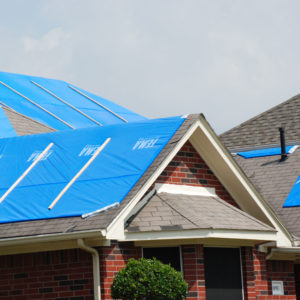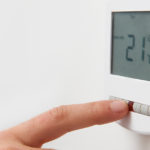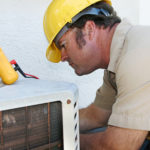 As we all bake in the summer heat, it’s easy to accept the reality of global climate change. Besides the warmer temperatures, the increase in sea levels and ocean temperatures caused by climate change are causing an increase in the frequency and intensity of storms.
As we all bake in the summer heat, it’s easy to accept the reality of global climate change. Besides the warmer temperatures, the increase in sea levels and ocean temperatures caused by climate change are causing an increase in the frequency and intensity of storms.
Most HVAC equipment is already designed to be tough and durable. It’s particularly important that you install high-quality wall caps and roof vents to protect the integrity of the building envelope. Your HVAC customers need to be prepared for the future, and as their installer, it’s your job to help them.
Secure equipment
Extreme winds are part of the storm profile in many regions. You’ll need to secure your customers’ external equipment with hurricane strapping. Many units are designed to handle hurricane strapping. If you are installing HVAC in a storm-prone region, familiarize yourself with the models that have this option. Your customers will appreciate this.
For outdoor equipment, recommend customers cover the equipment with a tarp when a storm is on its way. They should also remove any branches that might fall in a storm and remove any debris that could damage equipment if it gets picked up by the wind. If hail is a concern in your area, you can install guards or metal covers on outdoor units for protection. When installing, suggest adding a protective cage around the outdoor unit.
Air intake and exhaust in the building can become a problem during storms if it is breached. Choose components that are unlikely to be torn off in high winds. Rooftop vents made of a single piece of molded plastic or polymer resin will be the most secure. Wall caps designed to withstand the weather are far less prone to damage. Replacing old vents and caps is a small investment for your customers when compared with the cost of damage caused by water breaching the building envelope during a storm.
Outdoor ductwork can be a real problem in storms. The best approach is to move it inside, but if that’s not possible, your customers may need to build a protective covering for it.
Window air conditioners should be unplugged and removed prior to a storm. Your customers can also buy covers for these units. But make sure they are aware that the covers may not protect against driving rain, particularly if it is accompanied by strong winds. Water can get into the equipment and cause damage. And your customers will still be unable to use the air conditioner when the cover is on.
Be mindful of power issues
Indoor electrical equipment is vulnerable to storms as well. With every storm, power surges are a real possibility. Advise your customers to turn off breakers that lead to their HVAC equipment to avoid damage during the storm. This is also your customers’ best course of action if flooding occurs in their home.
After the storm
Do you collect customer email addresses? Send alerts with instructions when a storm is due in your region. Also review what homeowners need to do after the storm has passed. Tell them to remove the tarp as it could become a source of mold, especially in a wet environment. They will also want to check for any loose or disconnected wires before they send power to the equipment.
If their storm caused flooding, they will need to make sure there is no water inside the components before they turn the equipment on again. To help ensure there is no water, they should take action to increase natural air circulation around the unit. You may want to offer to inspect the equipment for them.
If you are proactive about protecting your customers’ equipment and homes, you will be rewarded. They will remain loyal customers, and they will recommend your services to their friends.



